|
Junction Tubes
A New Approach
By Stuart Anderson
As
most fly tiers know, tube flies have exploded in popularity in
the past decade, and with that explosion new approaches and
techniques to fish them have grown exponentially. Junction tubes
(also known as hook sleeves) are an important part of the whole
tube fly package. Without a reasonably secure connection between
your tube and hook, your overall fly will not cast, flow, or
fish the way you intended it.
When all tube flies were
(many fantastic patterns still are) tied “In the round”,
junction tube served one main purpose, it secured the tube to
your hook for casting purposes only. Things have changed a great
deal with many patterns now being tied in a more “standard” way,
the same way in which you would tie on a hook. These tubes have
a definite tail, wing, collar etc. The “In The Round” style
produced a fly that looked the same from all angles, making the
junction tube and the position of the tube in relation to the
hook not as important.
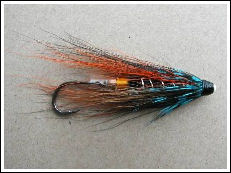
“In The Round
Style”
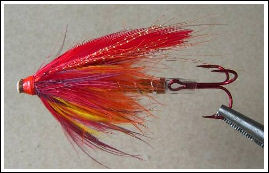
More like a hooked
pattern Junction
tube is a soft, flexible plastic, usually made of PVC, silicone,
or sometimes polyethylene.


They have traditionally fit
over the back end of either the plastic or metal tubing and then
slipped over the eye of the hook. Ideally, you want the hook and
junction tube to separate after you have hooked a fish. This
extends the life of your fly by keeping it out of a fishes’
teeth. I have fished for years with this set up and have had
very little trouble.
While testing new patterns the last few seasons, I have moved
away from the usual way on connecting the tube and the hook. It
began when I start using Flex Tube as a junction tube instead of
just using it for actual tube patterns. Now available in over 20
colours, both opaque and transparent, Flex Tube adds an extra
dimension to your fly. Not only does it work as a fabulous
junction tube (because of its flexibility and temperature
resistant properties) it also gives that extra splash of either
vibrant or subtle colour to your pattern. I have been using Flex
Tube for several years for junction tube in the traditional way.
This only works though when the diameter of your tied tube will
accommodate the size of the junction tube.

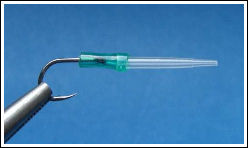
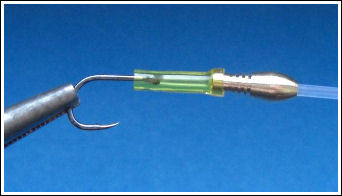
Flex Tube used in
a standard way as Junction Tubing
The junction tube works superbly
for what we intended, it holds the hook on with just enough give
for a hooked fish to separate the hook eye from itself. My main
concern was the unsightly bulge (what I thought) that was
created where the Flex Tube slipped over the back of the main
tube.

Unsightly Bulge

Using Plastic
Liner Tube to add a cone
at the front of a tube
For years I (along with many other tube tiers) have been using
small lining tube inserted into the front of a fly to attach
cone heads. I thought, why not reverse the idea and put the
lining tube out the back of the pattern in order to connect Flex
Tube to work as the junction tube? My reasoning was two fold.
1. You could remove the
unsightly bulge that exists when adding Flex Tube to a pattern.
2. Flex Tube could now be
added to a min tube style that would normally have too big of a
diameter to allow Flex Tube to be used anyway.
At the very minimum, I was looking
for a way to add junction tube to almost any pattern that would
allow an almost seamless transition from main tube back to the
hook.
Step One: twist a small section of
inside liner tube into the back of your pattern (bare tube here
just for the picture)


Step Two: place a small section of
Flex Tube on the end of the inside liner tube. Squeeze the Flex
Tube so that it butts up against the back of your pattern.
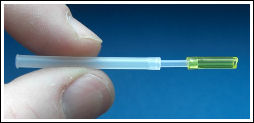
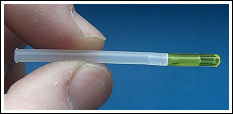
Step Three: Slide your tippet
through the tube, tie on your hook and insert the eye of the
hook into the flex tube. Be sure not too insert it too far, you
want it to separate when a fish begins thrashing.
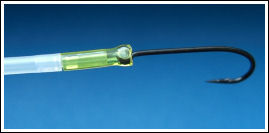
 You now have a seamless
transition from your pattern to your hook. You also have the
opportunity to switch up the colour on the back of your fly.

This technique can also be used on
Tapered, Metal, Nubby, Barbell, Ridged Bottles, Shumakov, and
Plastic Tubes
Tapered Tube





Nobby Tube
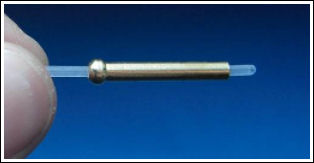
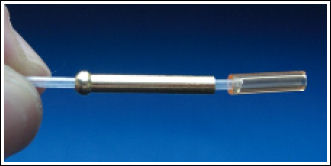
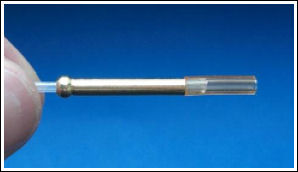

Metal Tube

Plastic Tube
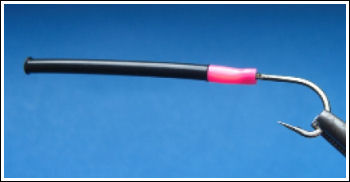
It may be a bit particular but I
think adding colour to the back of a pattern as well as creating
a seamless transition makes a much better looking tube fly.
Let’s hope the fish agree! By Stuart Anderson
2009 ©
Visit Stuarts website |